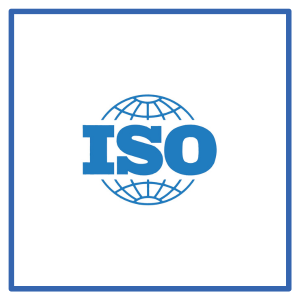New safety standard IEC 62368-1

The international standards committee IEC has prepared a new standard for the safety of use of electrical and electronic equipment supplied with voltages up to 600 V - IEC 62368-1. This standard replaces the existing EN60950-1, which has been in force for 10 years, and it came into force on 20 December 2020.
What does the new standard cover? IEC 62368-1 has been developed to ensure the safety of users and service personnel of many groups of electronic and electrical equipment, as well as the safety of those in the vicinity. The scope of IEC 62368-1 covers many different types of equipment, including external switched-mode power supplies and the accessories used with them. The regulation defines rules to ensure user safety and indicates how to proceed in order to achieve a safe product in operation. These are divided into four stages:
- Design of the device to ensure the absence of threats (so-called internal security)
- Protective measures in the equipment and installation for the protection of users against hazards
- Instructions on the protective measures to be taken to avoid risks
- Additional protective measures such as personal protection and training
In its programme concept, IEC 62368-1 is based on hazard analysis - HBSE (Hazard Based Safety Engineering). Hazards (dangers) originate from the various sources of energy in the equipment used and become real when the value of this energy exceeds the susceptibility limit for people, i.e. the users and operators of the equipment, or for material objects, e.g. installed in the vicinity of the equipment.
A new approach to assessment IEC 62368-1 is aimed at achieving the desired overall end result, rather than identifying and describing favourable distinguished processes, manufacturing methods or procedures. It is intended to assist in the identification and classification of energy sources that may present a hazard and the selection and proper application of protective measures (safeguards) against specific types of energy. This is a significant change in approach from the prescriptive design rules known from EN60950-1 towards achieving a safe device result according to IEC 62368-1. The basis and focus of IEC 62368 is the hazard analysis, the identification of energy sources and then the selection and implementation of protective measures that can ensure the correct functioning of the device and its safe operation. To carry out these tasks, it is necessary to take into account the function of the equipment and to determine the type and class of energy sources, the environmental and operating conditions, the categories of users, the type of protective measures applied. In some cases, the advisability of adopting specific solutions and achieving the expected results should be confirmed by appropriate experimental studies.
World-wide coverage Implementation of IEC 62368-1 is planned in most of the world's advanced countries: the US, Canada, Japan, China, South Korea, Australia, New Zealand and within the European Union.
What about existing products? Fortunately for manufacturers and distributors, IEC 62368-1 (2nd edition, current) includes a 'Sub-clause 4.1.1' clause to assist companies in managing the transition from older standards. In particular, the sale of existing products compliant and certified to IEC 60950-1 before 20.12.2020 will be permitted under the requirements of IEC 62368-1.
The provision reads "Components and subassemblies that comply with IEC 60950-1 or IEC 60065 are acceptable as part of equipment covered by this standard without further evaluation other than to give consideration to the appropriate use of the component or subassembly in the end-product."
However, whether this provision will remain valid beyond 20 December 2020 is still undecided and there is to be another round of voting on this. As the situation remains unclear as to whether the older 60950-1 and 60065 approvals will remain valid in Europe, many power supply manufacturers are working on moving their power supply portfolio to the latest 62368-1 (2nd edition) standard to minimise potential problems.
